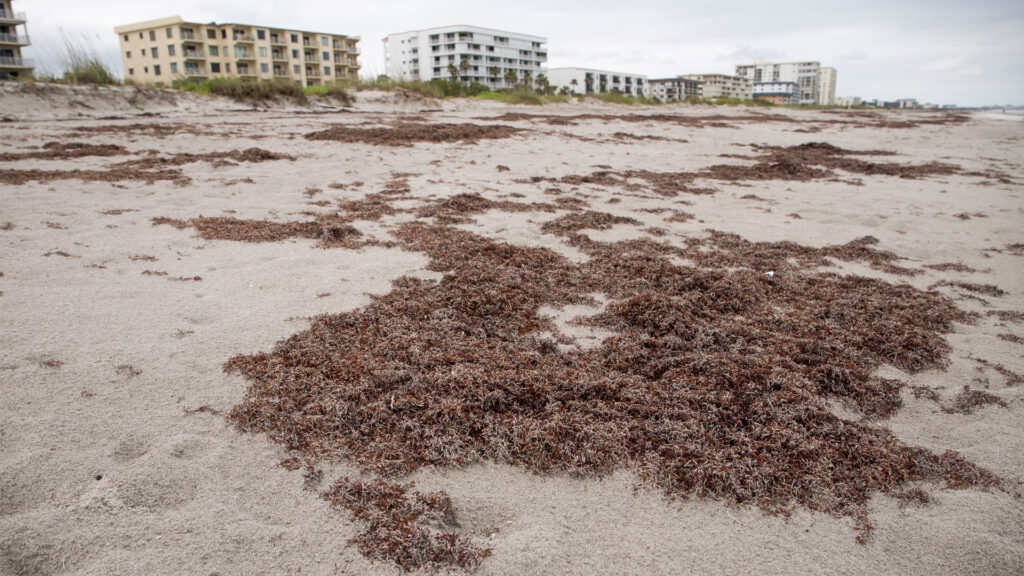By Mary Anna Mancuso, RepublicEn.org
You’ve heard of the Rust Belt and the Bible Belt, but there is a new belt and it is headed for Florida. The Great Atlantic Sargassum Belt, aka the giant seaweed blob, is heading for a Florida beach near you.

What is sargassum and why is it a big deal? If you’ve been on a Florida beach, you’ve probably seen this type of seaweed, technically a living microalgae which occurs naturally, lives in water and converts sunlight, water and carbon dioxide into biomass.
It’s certainly not unusual to have this type of seaweed wash onto our shores. In fact, in 2011, scientists began tracking the biomass, which has more or less remained the same size and traveled the same path, via satellite imagery. However, this year, based on this imagery, they estimate there is more than 10 million metric tons of sargassum in the Atlantic belt.
And it’s coming our way.
During its formation in the Atlantic, sargassum can accumulate reportedly high concentrations of arsenic and other heavy metals. Within 24 hours of making landfall, sargassum begins to bake in the Florida sun. The rotting process releases hydrogen sulfide, degrading the water quality, polluting beaches and smelling like rotten eggs. (Great for the tourist industry that is our state’s lifeblood.)
But more than economics are at stake: The health risks associated with rotting sargassum range from mild headaches to eye irritation, and a 2022 study found rotting sargassum posed an increased risk of pregnancy complications for women living near the coast.
Currently, coastlines in Florida such as Miami and Key West are working to tackle preparing to tackle the influx of sargassum to their beaches.
Just haul it away, I hear readers say. But removal and disposal are not as easy as it sounds given the size of this year’s blob (not a scientific term). Currently, Key West is contracted with a company who donates the sargassum to farmers to use as fertilizer. While in Miami, the excessive seaweed is being transported to an approved Department of Environmental Resource Management location for processing. But can the sheer volume of sargassum be managed in the same way of the past? And at what cost?
While the jury is out on whether climate change is the driving cause for the proliferation of the Great Atlantic Sargassum Belt, scientists are pointing to water pollution, increased agricultural runoff and human waste as contributing factors to the rapid growth of sargassum in our ocean. A recent study has found that nitrogen, found in fertilizer and animal waste, levels are 35% higher on average than 30 years ago due to sewage and farm runoff.
Also, sargassum, like other algae blooms, peaks in summer months due to its ability to thrive in warm water. Greenhouse gases such as carbon dioxide causing global warming have led to an increase in average ocean temperatures of 1.5°F since 1901. Warmer water is easier for small organisms to move through and allows algae to float to the surface faster, which is bad news for summer beach goers, not to mention what the impacts of such a vast amount of sargassum might have on wildlife.

The kicker is that the same phenomena causing the growth of sargassum belt is also causing other algae blooms such as red tide, a disastrous condition that frequently closes beaches due to karenia brevis which produces brevetoxins that kill marine life and cause health problems in humans.
As Florida beaches brace for a summer visit by the Great Atlantic Sargassum Belt, scientists and local officials are looking for ways to keep our beaches pristine and the environment safe for humans and sea creatures. While time will tell what personal, local and state actions can be taken to prevent this in the future, Floridians should brace themselves now for this most unwanted beachgoer — and be prepared to embrace actions to prevent more such unsavory blobs in the future.
Mary Anna Mancuso is a spokesperson for RepublicEn.org and political strategist based in West Palm Beach.
Sign up for The Invading Sea newsletter by visiting here.



